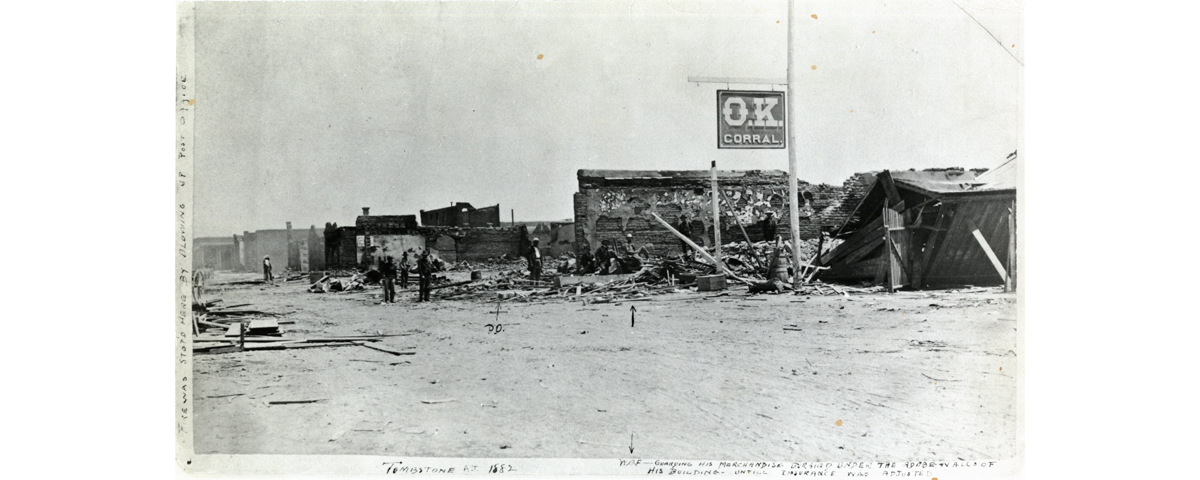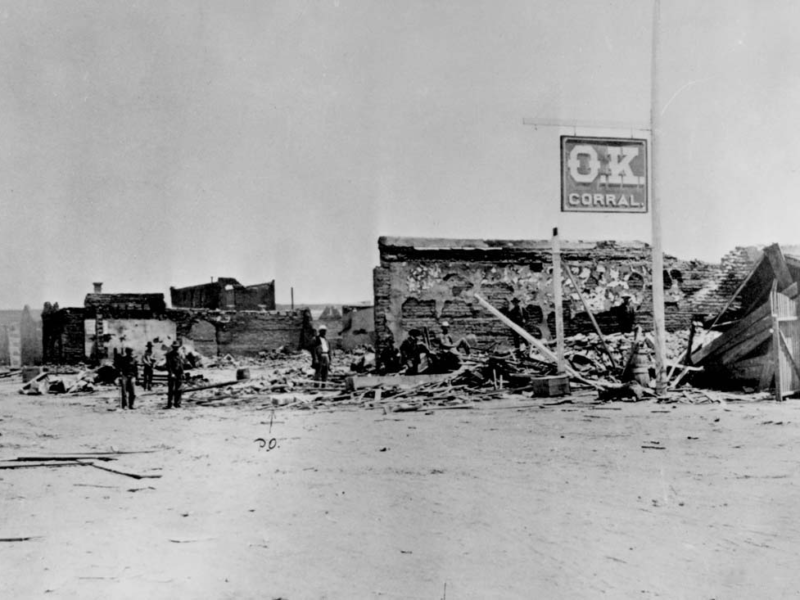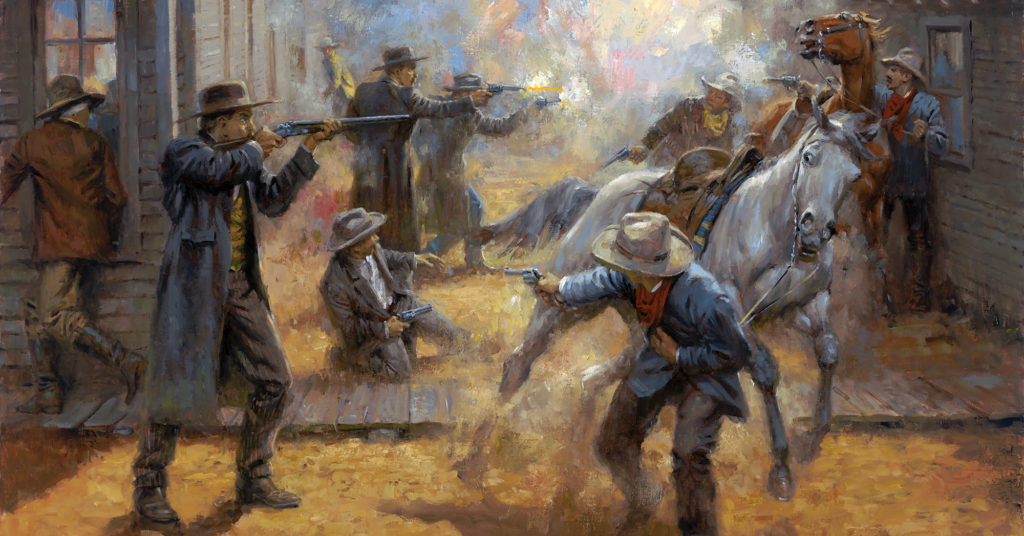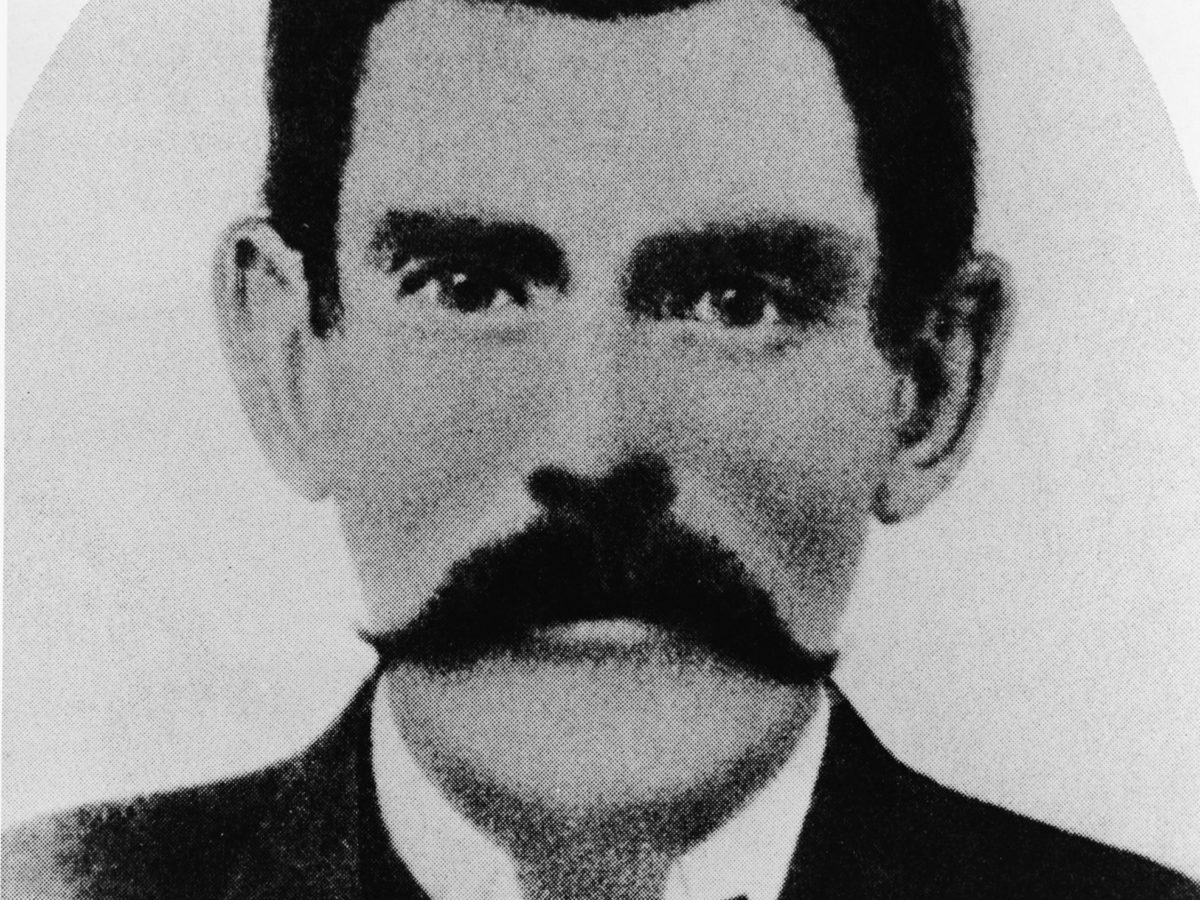Wyatt Earp biographer (and my friend) Lee A. Silva died on Aug. 26, 2014. While sifting through his stockpile of lifetime research material and book manuscripts (in anticipation of eventually having his final Wyatt Earp volumes published), collector/historians Scott Dyke and I found a very interesting copy of the well-known photograph of Tombstone, Arizona Territory, in the aftermath of a devastating fire on May 25, 1882.
This C.S. Fly photo provides a view of Fremont Street looking southeast (from the northeast corner of 3rd and Fremont) toward the post office and rear entrance to the O.K. Corral. Notable frontier photographer Fly took this photo just seven months after the gunfight near the O.K. Corral (which pitted three Earp brothers and Doc Holliday against two Clanton brothers and two McLaury brothers), and the view is contiguous to the site of that October 1881 fight.
In 2010 Silva found and purchased the image directly from the estate of artist Victor Clyde Forsythe, whose father William Bowen Forsyth (spelled without the “e”) and uncle Ira Chandler had a store (Chandler and Forsythe C.O.D.) at 328 Fremont, just a few lots east of the gunfight site. They claimed to have witnessed the shooting (see my article on that subject in the October 2013 issue of Wild West, or the far more detailed online version).
GET HISTORY’S GREATEST TALES—RIGHT IN YOUR INBOX
Subscribe to our HistoryNet Now! newsletter for the best of the past, delivered every Monday and Thursday.
Silva’s copy of the photo bears the handwriting of both V.C. Forsythe and his father — W.B.’s on the original cabinet card, and Clyde’s subsequently added to an enlarged copy. Their notations identify W.B. Forsyth as one of the pictured individuals (in the white hat sitting to the left of the O.K. Corral sign). Note the arrow W.B. placed on the photo, just to the left of the miraculously still standing O.K. Corral sign, with the corresponding initials “WBF” below the lower arrow. W.B. also pointed out the location of the post office, beside his store (see the arrow labeled “P.O.”).
Just below the photo, on the original cabinet card, W.B. printed the following: “WBF — guarding his merchandise buried under the adobe walls of his building until insurance was adjusted.” On the left margin of the photo, again in W.B.’s printing, is this notation: “Fire was stopped here by blowing up post office.”
Clyde Forsythe subsequently added the following notation regarding his father to the bottom of his enlarged copy, just below the original cabinet card: “These five pictures are enlarged copies of photographs my father, W.B. Forsyth, brought from Tombstone to Orange, California, probably in 1883. The notations on the photos were made by him and the ‘WBF’ are his initials. This definitely locates the post office, his store and the O.K. Corral.”
Recommended for you
In a May 26, 1882, newspaper article describing the aftermath of the fire, the family store listed losses of $4,500, with insurance covering of only $1,750 of the claim. This ultimately resulted in the closing of the Tombstone outlet of their company. Forsythe’s parents later moved to Orange, Calif., where Clyde was born in 1885. In 1952, based on the observations of his uncle and parents, as well as their Tombstone friends and his own exhaustive research, he painted “Gunfight at O.K. Corral,” which many have described as the next best thing to an actual photograph of the event. The painting depicts his father and uncle watching the gunfight from their store.
Just like W.B., the other people captured in Fly’s 1882 fire aftermath photo are almost certainly store owners “guarding” their own merchandise and awaiting the insurance adjusters, who arrived in town soon after the fire. Such a premise may help future researchers identify others in the photo, and it raises some questions. Is Mayor John Clum (known to have been in town and active in fighting the fire and trying to protect the post office) with the group standing in front of the post office? Is that Fly’s wife, Mollie, standing in a hoop dress beneath the O.K. Corral sign (and near their studio and boardinghouse)? Or, as at least one person has suggested, is that just some debris leftover from the fire? The fact is no matter how much additional reliable information we may obtain about Fly’s famous image, mysteries will doubtless remain for future researchers. WW
historynet magazines
Our 9 best-selling history titles feature in-depth storytelling and iconic imagery to engage and inform on the people, the wars, and the events that shaped America and the world.





